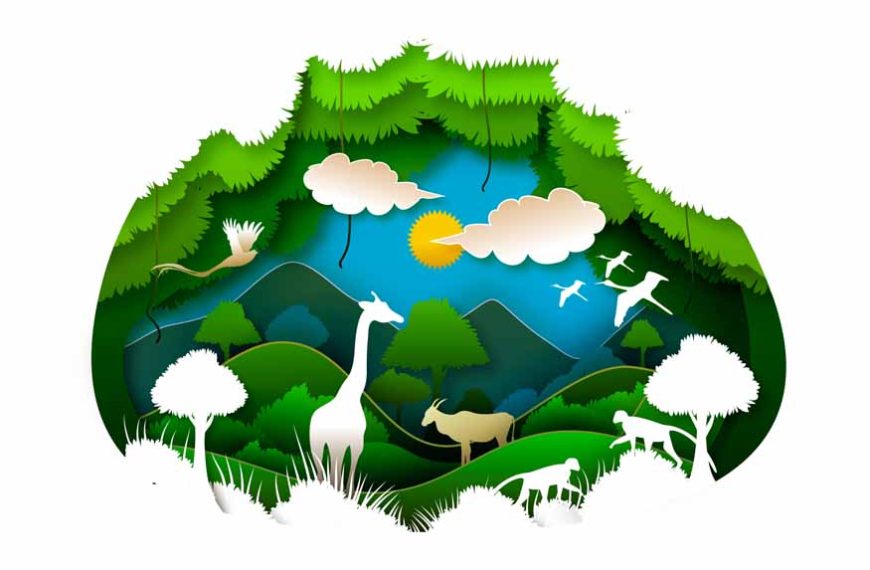Our planet exists because of biological diversity. The wellbeing of the human race depends on this and its rapid decline is a huge threat to both nature and people. The Global Assessment Report on Biodiversity and Ecosystem Services which was released in 2019 at UNESCO stated that the main culprits causing the loss of biological diversity are climate change, pollution, over-exploitation of natural resources and urbanisation. The Global Assessment Report clearly stated that human activities are responsible for the loss of biological diversity and amounted to 75 percent for terrestrial ecosystems. The Global Assessment Report also indicated that there were solutions and it was not too late to reverse the damage.
The United Nations has declared 22nd May as The International Day for Biological Diversity to create awareness and better understanding of biodiversity issues and concerns. The theme of this day in 2023 is ‘From Agreement to Action: Build Back Biodiversity’.
What is Biological Diversity
Biological diversity or biodiversity includes all kinds of life forms and the intricate patterns they create in nature. The biological diversity we see today is a result of evolutionary processes that have taken place over billions of years and are influenced by natural factors and now by steadily increasing human activities. It constitutes the fabric of life which is interconnected and of which humans are an inseparable component.
Biological diversity also includes the genetic variations that are present within each species. The diverse livestock breeds and crop varieties are live examples of this. The genes, chromosomes and DNA contribute to the uniqueness of individuals and species. Biodiversity can also be seen in the diverse ecosystems of forests, deserts, mountains, wetlands, lakes, rivers and agricultural lands. In each ecosystem, a number of living organisms, including humans, coexist and interact with one another as well as with the air, water and soil.
History of International Day for Biological Diversity 2023
The history of the International Day for Biological Diversity goes back to 1992 at the United Nations Conference on Environment and Development, commonly known as the Earth Summit, which took place in Rio de Janeiro, Brazil. Global leaders were forced to acknowledge the necessity to handle the declining biodiversity worldwide. As a result, a number of nations adopted the goals of the Convention on Biological Diversity on May 22, 1992. The Global Assessment Report on Biodiversity and Ecosystem Services highlights that about one million species face the risk of extinction. To address this crisis, the Kunming-Montreal Global Biodiversity Framework was adopted at the 15th Conference of Parties at the Convention on Biological Diversity. It provides a roadmap for conservation, restoration and sustainable use of biodiversity by 2030.
Kunming-Montreal Global Biodiversity Framework
- It emphasises the urgency for integrated action to protect biodiversity in all sectors of the global economy. Other crucial issues like funding conservation in economically backward countries and committing to biodiversity-friendly supply chains have been left for later.
- It is not a binding international agreement.
- It asks countries to prioritise biodiversity protection in all decisions and also recognises the necessity of conservation in ensuring the protection of human health.
- Its theme is Ecological Civilisation: Building a Shared Future for All Life on Earth.
- By adopting this framework, nations are obliged to support the development, adoption and implementation of an effective post-2020 capacity building action plan for the Cartagena Protocol on Biosafety.
- The Protocol looks to protect biodiversity from the risks caused by living modified organisms which are a result of modern biotechnology.
- The signatory nations will ensure that the post-pandemic recovery policies and programmes focus on the conservation and sustainable use of biodiversity and also promote sustainable and inclusive development.
- The declaration referred to the ’30 by 30′ target which is a key proposal being debated at the 15th Conference of Parties at the Convention on Biological Diversity which would give 30 percent of the Earth’s land and oceans a protected status by 2030.
- The framework consists of 4 goals and 23 targets for 2030.
Challenges with Implementation:
- With just 7 years remaining to meet the targets and goals, immediate action is essential as almost 1 million animal and plant species are close to extinction today.
- Reducing biodiversity loss requires accelerated and comprehensive efforts and implementation strategies.
- There is a funding gap that is proving to be detrimental. The signatory countries are aiming that 200 billion USD per year is channelled towards conservation efforts, from public and private sources, annually. Ensuring financial flow of 30 billion USD per year from developed to developing countries by 2025 is another aim but this funding has yet to be fulfilled.
- Effective implementation is proving to be difficult as there is a lack of specific funding commitments for biodiversity.
- Member nations agreed to realign their National Biodiversity Strategy and Action Plans to the Global Biodiversity Framework but submitting the revised plans has been slow. Spain is the only country that has submitted its realigned National Biodiversity Strategy and Action Plans so far.
- The target of protecting 30 percent of land and water may infringe on the rights of indigenous communities. A balance between conservation efforts and the rights of indigenous people has to be balanced for successful implementation.
International Day for Biological Diversity 2023 – Its Significance
The International Day for Biological Diversity is a global forum that emphasises the indisputable importance of biodiversity in sustaining life on Earth. Biodiversity includes innumerable plants, animals and microorganisms as well as the ecosystems they live in. It is essential for enabling pollination, nutrient recycling, climate regulation and water purification.It also holds economic, cultural and aesthetic value as it supports livelihoods and contributes to sustainable development.
Theme of International Day for Biological Diversity 2023
The theme for the International Day for Biological Diversity in 2023 is ‘From Agreement to Action: Build Back Biodiversity.’ The theme signifies the necessity to go beyond words and carry out concrete steps to safeguard and revitalise biological diversity. It stresses tahe importance of effectively implementing the aims and goals of the Convention on Biological Diversity and other international agreements, including the Sustainable Development Goals as a way to handle the global biodiversity crisis.
Every Biological Diversity Day is significant, but this year’s celebrations are special as the adoption of the Kunming-Montreal Global Biodiversity Framework at the 15th Conference of Parties gives hope of a change for the better. This year’s theme ‘From Agreement to Action: Build Back Biodiversity’ will hopefully put a stop to the crisis.
The resources of biological diversity are the pillars of civilizations. More than 80 percent of human food comes from plants and 20 percent of animal protein to feed about 3 billion people comes from fish. About 80 percent of rural people in developing countries depend on plant‐based medicines for basic healthcare. Loss of biodiversity threatens our health and increases diseases transmitted from animals to humans. Preserving biodiversity helps to fight against pandemics. The UN decided to celebrate the International Day for Biological Diversity every year to create awareness about how human activities are degrading biodiversity to a dangerous level.
For more information on this topic you could reach out to EuroKids and keep yourself updated.
















